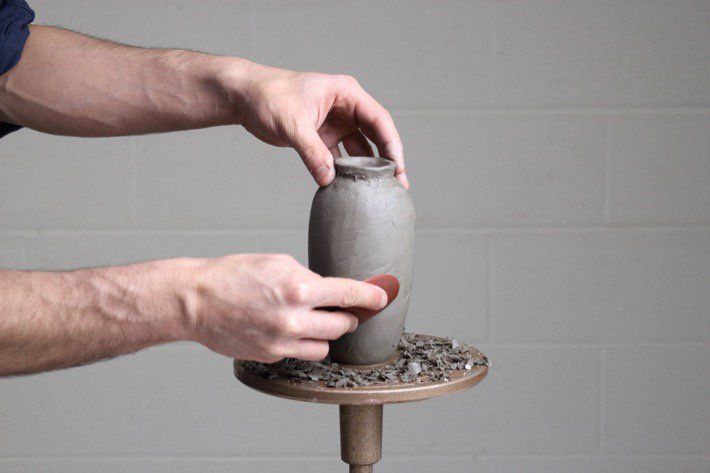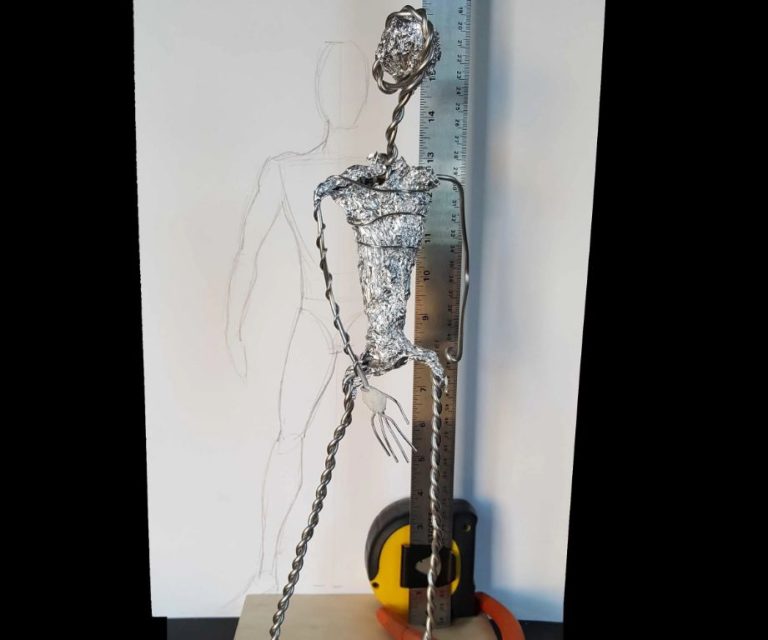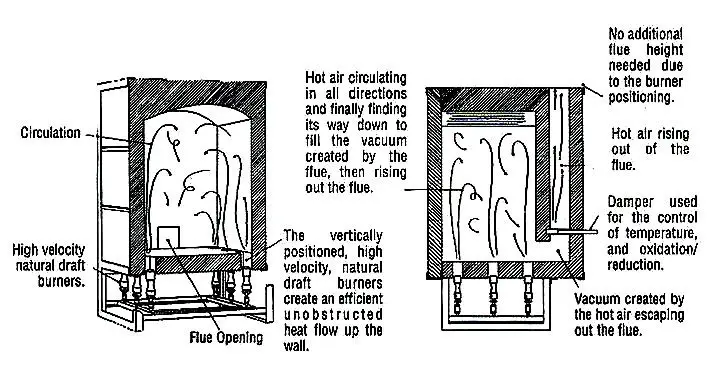What Is Stud Anchor?
What is a Stud Anchor?
A stud anchor, also known as a stud bolt or wedge anchor, is a type of anchor bolt used to fasten building materials to concrete. It consists of a threaded stud, hex nut, and expansion clip.
The stud itself is a threaded bolt typically made of galvanized or stainless steel. The expansion clip (also called a wedge or sleeve) fits around the bottom of the stud. When the stud anchor is hammered or screwed into a pre-drilled hole in the concrete, the clip is compressed inward. The compression against the concrete creates friction that prevents the anchor from being pulled out.
The purpose of a stud anchor is to provide a strong, permanent threaded fastener in concrete. Their wedge design allows them to withstand tension loads as well as vibrations and shocks. Stud anchors are used in many structural applications, such as securing framing, machinery, and fixtures to concrete walls, floors, and ceilings.
Types of Stud Anchors
There are several types of stud anchors commonly used for different applications:
Expansion Anchors – These use a cone-shaped expander plug that gets driven into a pre-drilled hole in the concrete as the anchor bolt is tightened. The expander pushes outward against the concrete, creating a strong grip (Stud Anchors).
Sleeve Anchors – Also known as wedge anchors, these have an outer threaded sleeve and an inner cone-shaped expander. As the nut is tightened, the expander is pulled up through the sleeve, expanding it outward for gripping power (Concrete Stud Anchors).
Epoxy Anchors – These dispense a two-part epoxy into the drilled hole as they are installed. The epoxy then hardens, bonding the anchor in place. They can be used in solid or hollow masonry (Concrete Stud Anchors).
How Stud Anchors Work
Stud anchors work by gripping the inside of a hole drilled into a substrate material like concrete, brick or wood. There are two main types of stud anchors that grip in different ways:
Wedge anchors work by using an expansion clip that gets wider as a nut is tightened on the anchor bolt. As the nut is turned clockwise, it pulls up on the anchor body which forces the expansion clip to slide outwards against the sides of the hole (source). This creates pressure and friction that prevents the anchor from being pulled out.
Sleeve anchors work differently – they have an outer sleeve with legs that bend outwards and grip the inside of the hole as a cone nut or bolt is tightened. The force applied pushes the legs into an arch shape which creates outward pressure. The deformed legs dig into the substrate to prevent pullout (source).
So in summary, wedge anchors grip with sliding clips and sleeve anchors grip with outward bending legs as force is applied during installation. Both create holding power through friction and pressure against the substrate hole.
When to Use Stud Anchors
Stud anchors should be used anytime you need to mount or hang something on a wall and there is a stud available behind the drywall. Studs provide the most secure mounting surface, as they are solid pieces of wood that run vertically from the floor to the ceiling. According to Monroe Engineering, if there is a stud directly behind the wall where you want to mount something, you should always use the stud rather than anchors in the drywall alone.
Studs are typically spaced 16 inches or 24 inches apart, so locating them simply requires using a stud finder. Stud anchors work well in walls made of drywall over wood stud framing. They can also be used in concrete walls and hollow core doors if the stud anchors are designed to grip and hold in those materials.
For heavy objects like cabinets, shelves, TVs, and mirrors, using a stud anchor into an actual stud provides vastly superior strength compared to anchors in drywall alone. According to A Butterfly House, you should always hang heavy objects from studs whenever possible. For lighter items, either studs or drywall anchors may suffice depending on the exact weight.
Advantages of Stud Anchors
Stud anchors offer several key advantages over other fastening methods like drywall anchors:
Strength – Stud anchors attach directly to the wooden studs behind drywall, providing a much stronger and secure connection. According to Hilti, stud anchors can safely support heavy loads of up to 165 lbs per anchor.
Permanence – Since stud anchors connect to the actual wall structure, they provide a permanent and reliable mounting solution. Drywall anchors can loosen or detach over time.
Load-bearing – Studs are designed to bear structural loads within a building. Attaching directly to them allows stud anchors to support heavy shelves, TVs, cabinets and other items that require a load-bearing connection.
Overall, if your application requires strength, durability and the ability to support heavy loads, stud anchors are superior to drywall anchors and should be used whenever possible.
Disadvantages of Stud Anchors
One of the main disadvantages of stud anchors is that they are more difficult to install compared to other types of anchors like wall anchors. Stud anchors require accurately locating and drilling into a wall stud which can take more time and effort than simply drilling into drywall or masonry.
Another disadvantage is that stud anchors only work when installed directly into the wood frame studs of a wall. They cannot be used in locations between studs like many toggle bolts and other hollow wall anchors can. This limits the placement flexibility for stud anchors. According to Ask Hilti, “When an over-torqued anchor is placed close to the edge, the extra expansion force generated could cause the concrete to break, even before loading the fixing.” This demonstrates the importance of proper stud placement when using stud anchors.
Overall, while very strong when installed correctly, stud anchors may require more skill and effort to use properly compared to simpler drywall anchors. Their limitation of only working in studs also reduces flexibility in terms of positioning.
How to Install Stud Anchors
Installing stud anchors properly is important for creating a secure connection. Here are the basic steps:
1. Mark the location where the anchor needs to go. Use a ruler and pencil to mark the exact spot.
2. Drill a pilot hole using a masonry bit that is the same diameter as the anchor sleeve. Drill the hole slightly deeper than the length of the anchor. Clean out any dust or debris.
3. Insert the anchor sleeve into the hole. The wings on the anchor should line up with the surface of the material you are drilling into.
4. Place the object to be secured over the anchor sleeve. Insert a screw or bolt through the object and thread it into the anchor sleeve to expand the wings, locking it in place.
5. Tighten the screw or bolt using a wrench or drill. Do not over tighten, as this can cause the anchor to fail. Follow the manufacturer’s torque specifications.
6. Periodically check anchors to make sure they remain tight. Anchors can loosen over time due to vibration or temperature changes.
Be sure to follow all safety protocols when drilling and installing anchors. Wear protective eyewear and gloves when handling anchors and tools.
Load Ratings
Stud anchors are rated to withstand certain weight limits based on the type and size of anchor, the material it’s anchored into, and other factors. Some key load ratings to consider:
Concrete: According to ITW Red Head’s technical data, a standard 3/4″ diameter x 5″ long wedge anchor in 2,500 psi concrete can hold up to 2,565 lbs in tension and 1,710 lbs in shear 1. Larger diameter anchors have higher ratings – a 1-1/4″ wedge anchor can withstand over 7,500 lbs in tension.
Steel: A 3/8″ stud anchor into steel can hold 610 lbs in tension 2. In a softer material like aluminum, the rating may be closer to 300 lbs. Always check manufacturer specs.
Other Materials: Load limits vary widely in materials like concrete block, brick, and wood. Look for test data specific to the substrate you’re anchoring into. In general, solid concrete offers the highest strength.
Common Uses
Stud anchors are commonly used in residential and commercial settings for securing objects to walls made of concrete, brick, or other masonry materials. Some of the most common uses for stud anchors include:
- Hanging shelves on garage or basement walls
- Mounting TVs on masonry walls
- Securing heavy mirrors or art to masonry
- Attaching handrails or grab bars in bathrooms
- Hanging commercial signs or billboards on brick walls
- Securing door frames to masonry during installation
- Anchoring hardware, conduits, or light fixtures to concrete ceilings
Stud anchors provide a secure way to mount medium to heavy objects on masonry walls without needing to drill into the masonry material. Their holding strength makes them well-suited for supporting shelves, TVs, mirrors, and other household or commercial items on concrete basement walls, brick walls, concrete block, and more. Proper selection and installation of stud anchors allows secure attachment of items weighing <50 to 100 lbs or more.
Alternatives to Stud Anchors
If you cannot drill or install a stud anchor into a stud for some reason, there are a few alternatives that can provide secure mounting in drywall without hitting a stud:
Toggle bolts are an excellent stud anchor alternative, especially for hollow walls or drywall only. They use spring-loaded wings that flip out and brace against the backside of the wall once inserted through a drilled hole. This provides a secure mounting point in hollow walls. Toggle bolts can hold a substantial amount of weight in drywall and do not require a stud.
Molly bolts, also known as hollow wall anchors, work similarly to toggle bolts. They expand open behind the wall once inserted to grip the drywall from both sides. Molly bolts come in various sizes for light to heavy duty applications. They can securely mount items on hollow drywall without hitting a stud. Molly bolts hold more weight than many other drywall anchors.





